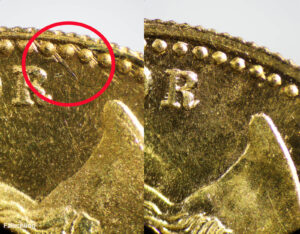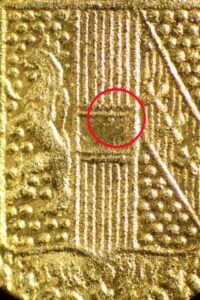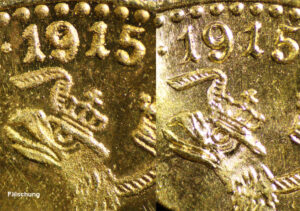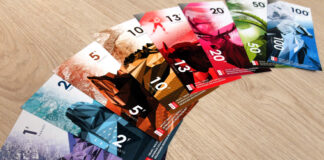The history of ducats began in 13th century Europe (Venice), however, these coins did not come to Austria until the 16th century. Ducats were in circulation as legal tender until 1858, and were produced by the authorities as trade gold coins until 1915.
On the obverse, ducats feature the portrait of Austrian emperor Franz Joseph I and the Latin inscription: “FRANC IOS I D G AUSTRIAE IMPERATOR”. The reverse depicts the coat of arms of the time (the double eagle) and a Latin legend: “LOD ILL REX AA (the year) HVNGAR BOHEM GAL”. The motifs of the restrikes and those of the original coins are the same. There is no face value engraved on the 1 ducat coin. The 4 ducat piece shows a 4 in parenthesis beneath the eagle. For modern restrikes the 1872 design was used and they feature the year 1915.
Technical Specifications
The ducat’s technical parameters are the following:
- 4 ducat coin: weight: 13.96 grams and a diameter of 39.50mm.
- 1 ducat coin: weight: 3.49 grams and a diameter of 19.75mm.
Both coins were made from a 0.986 gold/copper alloy.
The 4 ducat coin with a diameter of 39.50mm belongs to the category of large bullion coins. It is only 0.71 mm thick, and can therefore be easily bent. This is the reason why original pieces available on the market are often bent.
Beware: Counterfeits Are Either Very Poorly or Extremely Well Executed!
Among all the bullion coins available on the market, Austrian ducats are among the coins of the finest minting quality. Ducats belong to a group of coins that have rarely been forged. The combination of detailed motifs, excellent and precise minting quality and a thickness of 0.7mm protect the coins from being counterfeited and discourage forgers.
The low thickness of ducats is also the reason why forgeries are usually minted and not cast. Minting them is much more complex and expensive. To achieve a result that can compete with the original coin, forgers need high-quality tools and perfectly trained experts. In practice this means that poor forgeries are quite easy to spot, and well executed forgeries only show very few features that can help identify them as counterfeits. This fact and the incredible volume of ducats on the market generate the risk that many unidentified forgeries might be in circulation.
Since ducats are made from an high-gold alloy (0.986) and are of low thickness, it happens quite often that the results delivered by the testing equipment are not interpreted correctly. It is of paramount importance to adjust the parameters of the testing device to the specific coin.
As an example, I analysed two counterfeits that only show minor errors.
Specific Counterfeits: 4 Ducats
The counterfeit was not created by using the same amount of pressure used for the original, therefore, the surface structure of the letters on the forgery differs from that of the original coin.
The graphic motifs, letters and numbers were evenly minted, however, they are not of the same depth as those on the authentic 4 ducat piece. The border of dots is of uneven height.
The only clearly visible error is the dent next to the number “4”.
The ridged edge looks almost exactly like the original.
The composition of the alloy:
| Au | Ag | Pt | Pd | Cu | Zn | Sn | Pb | Fe | Cr | Ni |
| 72.9 | 0.372 | 0.038 | 0.012 | 24.5 | 1.79 | 0.003 | 0.001 | 0.334 | 0.017 | 0.016 |
The counterfeit has a diameter of 39.75mm and a weight of 13.94 grams.
Specific Counterfeits: 1 Ducat
The forgery has a visible feature at the centre of the coat of arms. A small positive dot in the shape of a grain of sand, which is highlighted in the image. Letters and numbers are different from the original coin, the surface structure is a bit porous. The edges are curved and the contrast to the background is not as high as on the real coin. The border of dots was imitated very well and looks similar to that of an authentic coin.

On the obverse, next to the letter “R” and the border of dots, there are two small positive lines. The edge is ridged almost exactly as that of the original.
The composition of the alloy:
| Au | Ag | Pt | Pd | Cu | Pb | Fe |
| 73.1 | 26.7 | 0.0035 | 0.020 | 0.099 | 0.018 | 0.040 |
The counterfeit has a diameter of 19.99mm and a weight of 2.12 grams.
Please bear in mind that all features shown in the photos are of microscopic dimensions. The parts highlighted in the images were photographed with a magnification of at least 4x.
Recently, Peter Zgorzynski explained how to detect forgeries of Swiss vreneli coins in the first part of this series.
You can find out more about the author and his expertise in the Who’s Who on Peter Zgorzynski.
He already educated CoinsWeekly readers on tungsten counterfeits in this in-depth article.
You can learn more about identifying counterfeits in our four-part series “How to detect forgeries”: part 1, part 2, part 3, part 4.
In our “Bullion coins” series, you can find more information on the historical background and the development of ducats as bullion coins.








